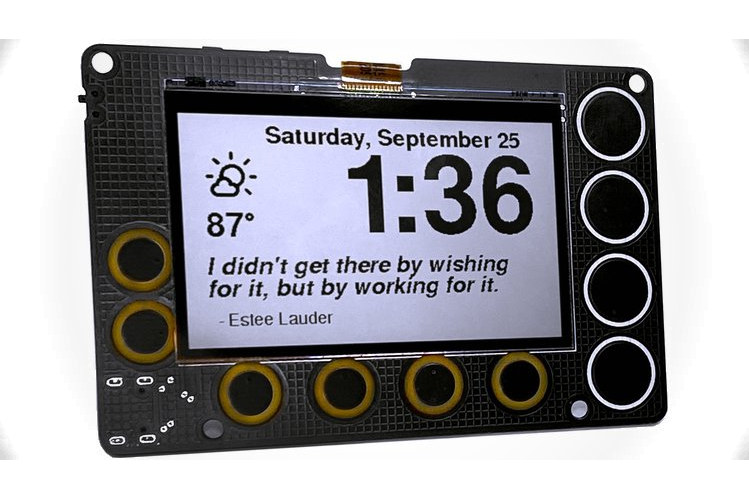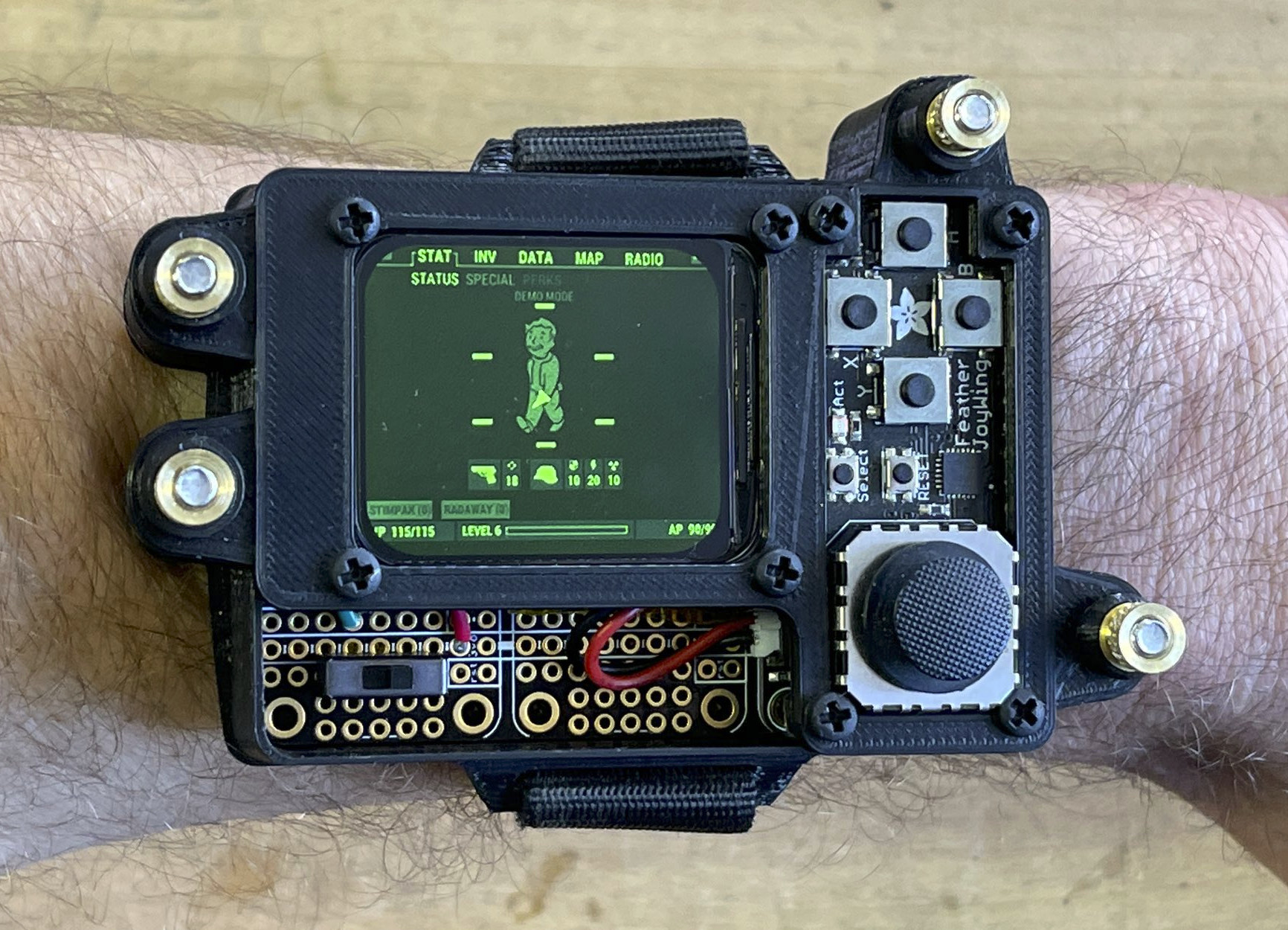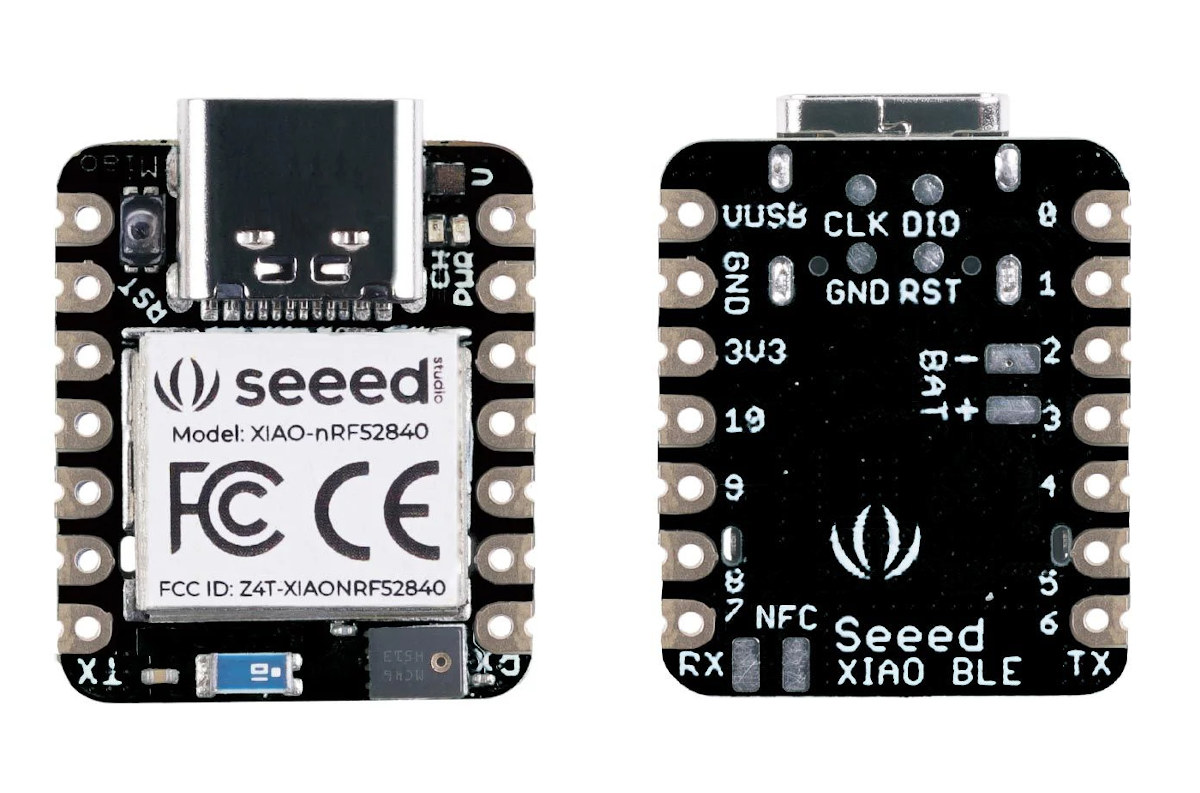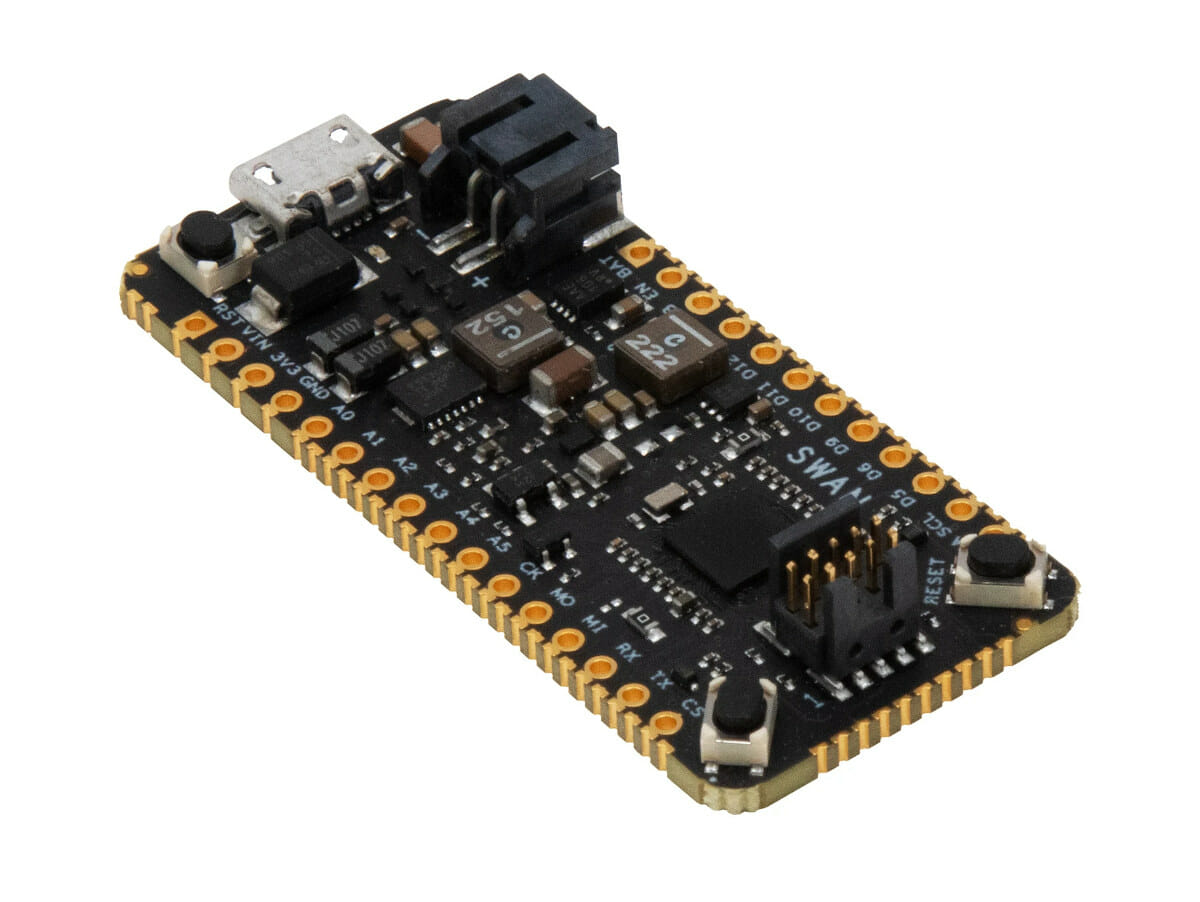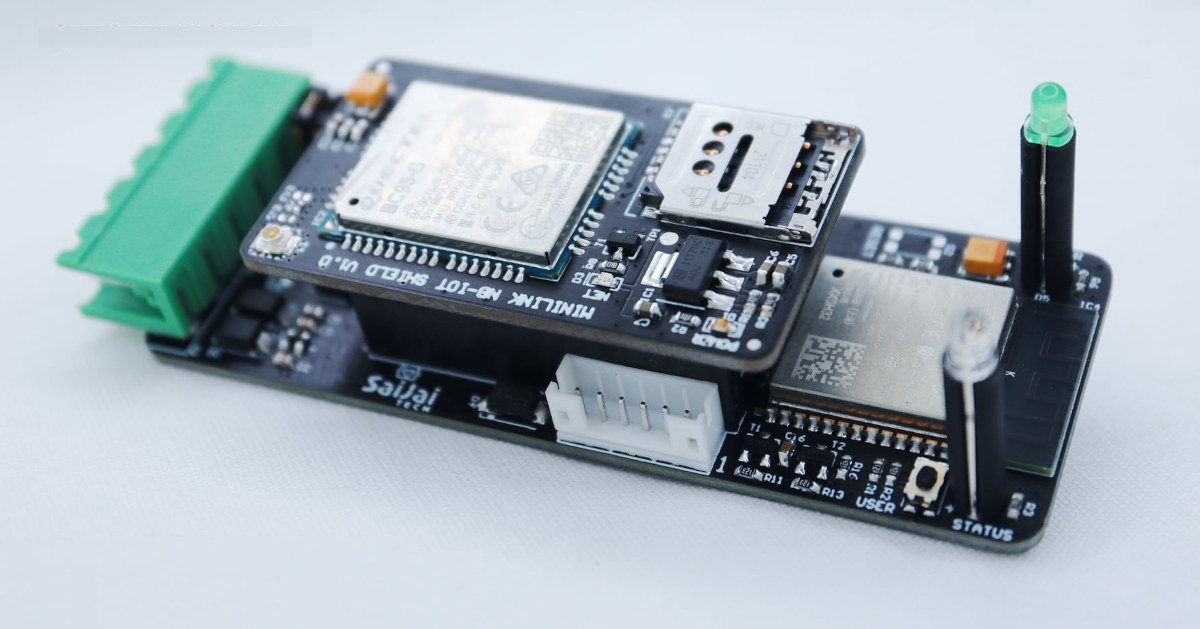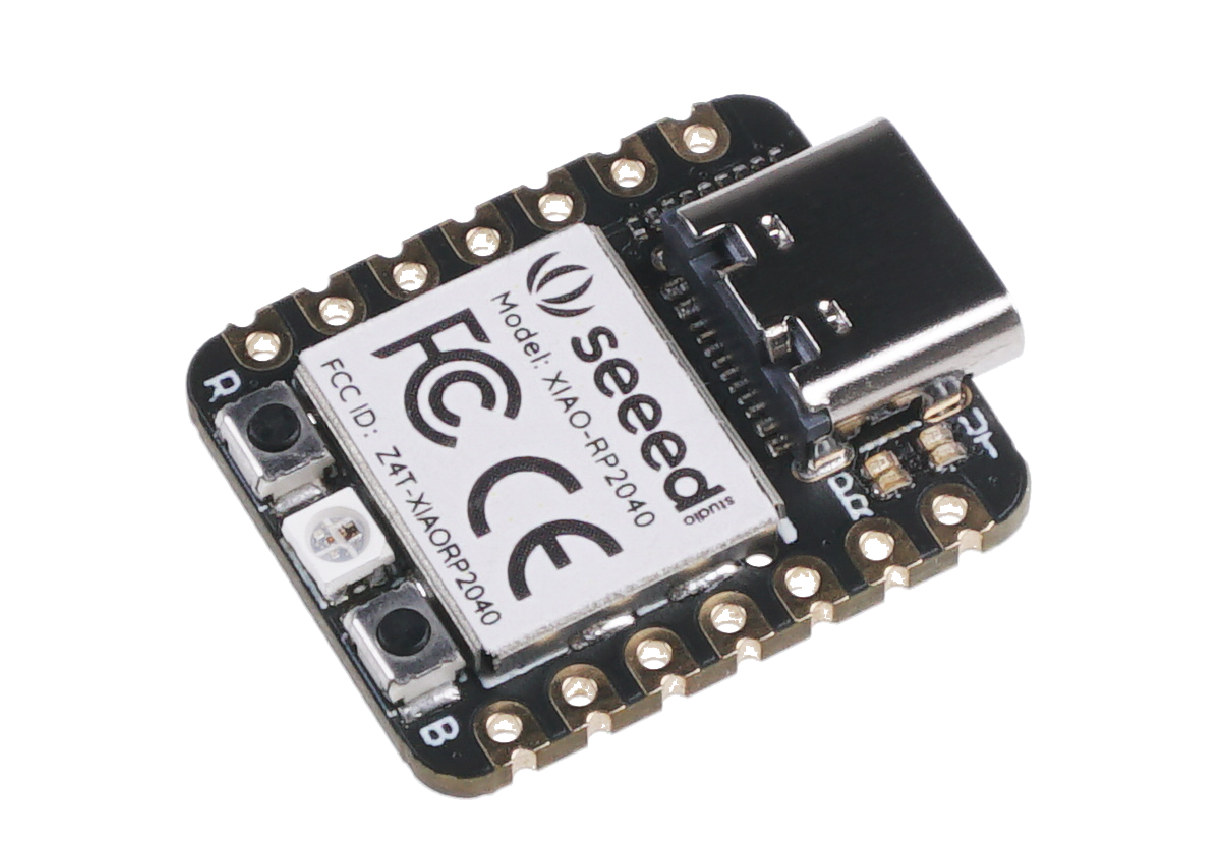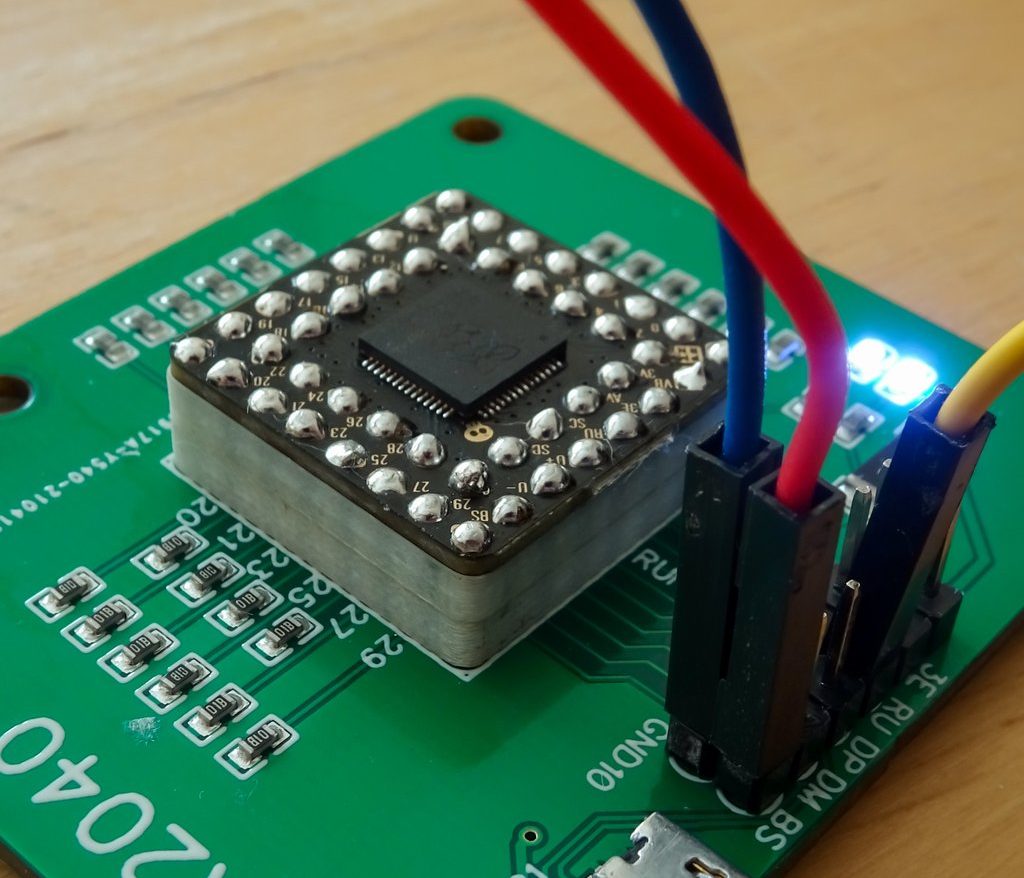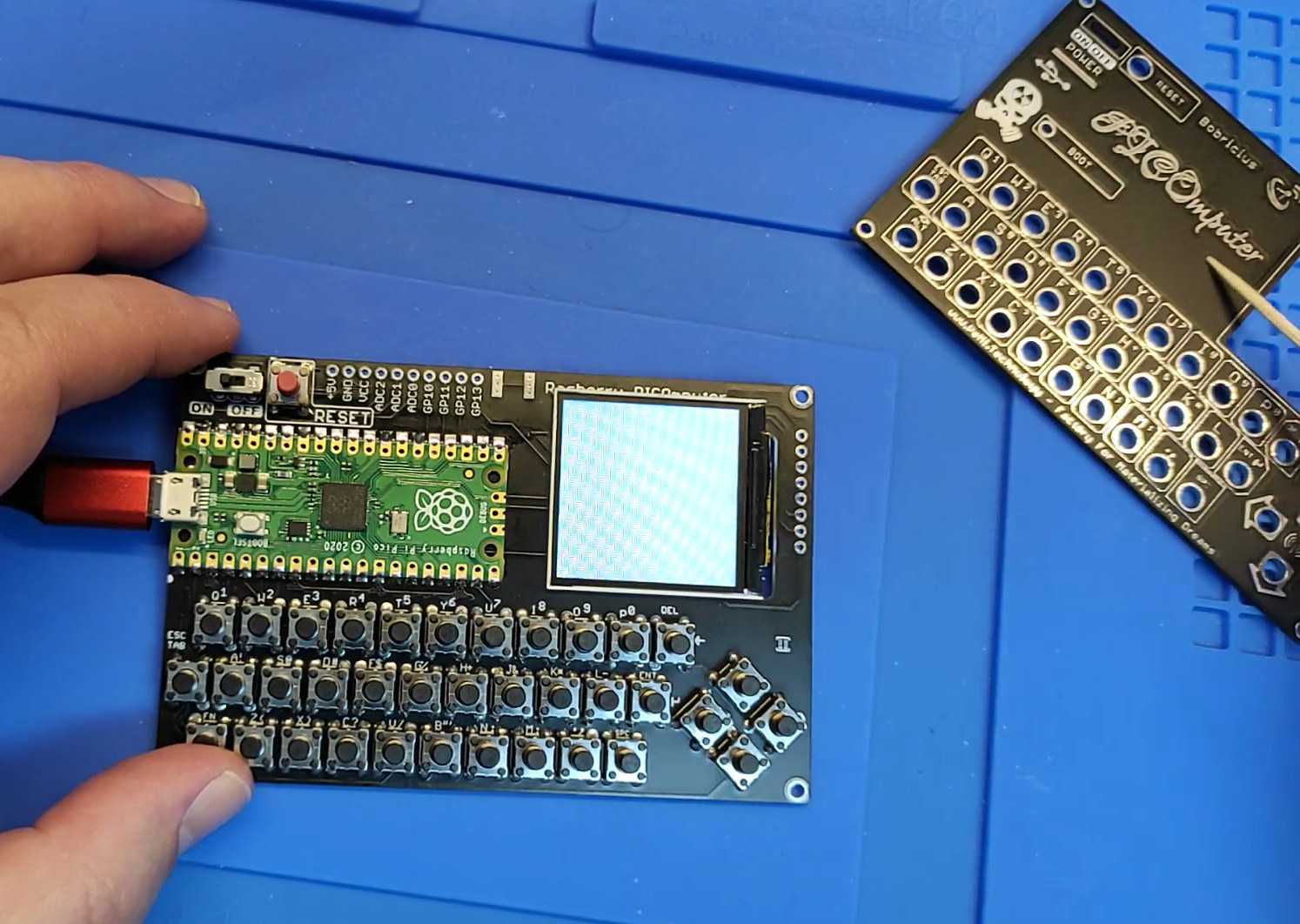Newt is a battery-powered, always-on, ESP32-S2 wireless display with a 2.7-inch display leveraging SHARP’s Memory-in-Pixel (MiP) technology to provide an experience similar to E-Ink displays but with a much faster refresh rate. The wireless display can connect to the Internet to retrieve weather, calendars, sports scores, to-do lists, quotes, and whatever you’d like. Since it is powered by an ESP32-S2 microcontroller you can program with the ESP-IDF framework, Arduino, MicroPython, or CircuitPython. Newt display specifications: WiFi module – Espressif ESP32-S2-WROVER module with ESP32-S2 single-core Xtensa LX7 processor @ 240 MHz with 4 MB flash and 2 MB PSRAM Display – 2.7-inch, 240 x 400 pixel SHARP MiP LCD with “high-contrast, high-resolution, low-latency content with ultra-low power consumption”, reflective mode to eliminate the need for a backlight. USB – 1x USB Type-C port for programming, power, and charging Expansion – I2C Qwiik connector Misc Micro Crystal RV-3028-C7 RTC (45nA power consumption) […]
DIY Pip-Boy wrist computer is equipped with Adafruit Feather RP2040 board
The Pip-Boy is a (virtual) personal information processor found in Fallout post-apocalyptic role-playing video games. But John Edgar Park decided to bring the wrist computer to (real) life combining an Adafruit Feather RP2040 board, a round IPS TFT color display, directional buttons, a joystick, and a battery. The Raspberry Pi RP2040 based Pip-Boy is programmed with CircuitPython and the demo code is a slide-show with navigation controls, but you could obviously adapt the code to your needs. The main components are: Black Adafruit Feather RP2040 board Adafruit Joy FeatherWing adding buttons and a joystick Adafruit 1.69″ 280×240 Round Rectangle Color IPS TFT Display FeatherWing Tripler mini kit to connect the two boards above and the display 3D printed enclosure A 3.7V/420mAh LiPo battery for power On/off switch The design is completed with some headers, stand-offs, screws, and a nylon watch strap. You’ll find detailed instructions with the list of parts, […]
Seeed XIAO BLE – A tiny nRF52840 Bluetooth 5.0 board with (optional) IMU sensor and microphone
Seeed Studio has just introduced two new members to their XIAO board family with the Seeed XIAO BLE and XIAO BLE Sense boards equipped with Nordic Semi nRF52840 Bluetooth 5.0 microcontroller, as well as an IMU sensor and microphone on the “Sense” model. Just like the earlier XIAO RP2040 board, the tiny Seed XIAO BLE board can be programmed with Arduino, MicroPython, and CircuityPython, and offers two headers with 7-pin each for GPIOs. What’s really new is the wireless connectivity, the sensors, and a battery charging circuitry. Seeed XIAO BLE specifications: Wireless MCU – Nordic nRF52840 Arm Cortex-M4F microcontroller @ up to 64 MHz with 1 MB flash, 256 KB SRAM, Bluetooth 5.0, NFC, Zigbee connectivity Storage – 2 MB QSPI flash Expansion I/Os 2x 7-pin headers with 1x UART, 1x I2C, 1x SPI, 1x NFC, 1x SWD, 11x GPIO (PWM), 6x ADC 3.3V I/O voltage (not 5V tolerant) Sensors […]
Blues Wireless Swan board adds castellated holes to Adafruit Feather form factor
We’ve often written about Adafruit Feather-compatible boards in the past, but Blues Wireless Swan board is a little different, as the STM32L4-based board comes with castellated holes instead of just through holes which allows the board to expose up to 55 GPIOs, or 36 more pins than a traditional feather-compatible board. The company also introduced the “Feather Starter Kit for Swan” that enables the board to work with the company’s Notecard LTE Cat-M/NB-IoT M.2 modem that ships with 10-year (up to 500MB) of IoT connectivity, as well as GPS/GNSS connectivity. The Swan board Swan specifications: MCU – STMicro STM32L4R5 Arm Cortex-M4 microcontroller clocked at 120Mhz with 2MB of flash and 640KB of RAM USB – 1x Micro USB port for power and programming Castellated holes giving access to 55 GPIO including: 8x analog input 16x digital 4x I2C, 3x SPI 1x USB OTG full speed 1x 14-channel DMA 12-bit ADC, […]
MiniLink IIoT Node – An Arduino compatible RS485 to LoRaWAN node with wireless expansion
Designed by Thailand-based Saijai Tech, MiniLink IIoT Node is an Arduino compatible board based on either an ESP32 WiFi & Bluetooth SoC or an unnamed Microchip Cortex-M0+ microcontroller designed for Smart Agriculture or industrial applications (e.g. PLC controllers). The board includes an RS485 interface for sensors or actuators, an ACER-branded LoRa module, and expansion headers to add an extra wireless module with either LoRa PtP (P2P, Point-to-Point), NB-IoT, or 3G/4G LTE & GNSS, and some of those add an extra RS485 port. MiniLink IIoT node key features & specifications: MCU (one or the other) Espressif ESP32 dual-core processor with 2.4 GHz WiFi and Bluetooth LE Microchip Arm Cortex-M0+ microcontroller (probably SAMD21) LPWAN – ACER AS923 LoRaWAN module Sensor interface – RS485 or UART via terminal block (jumper selectable) Expansion – 2x 14-pin header for expansion modules Misc – User & reset buttons, RS485/UART selection jumpers, user and power LEDs, USB/TTL […]
Tiny Seeeduino XIAO board gets Raspberry Pi RP2040 MCU
Seeeduino XIAO is a tiny Arduino Zero compatible board with battery support that was launched last year with Microchip SAMD21G18 ARM Cortex-M0+ microcontroller at up to 48MHz. Seeed Studio has now launched the XIAO RP2040 board with the same form factor but upgrading to a more powerful Raspberry Pi RP2040 dual-core Cortex-M0+ microcontroller clocked at up to 133 MHz. XIAO RP2040 specifications: MCU – Raspberry Pi RP2040 dual-core Cortex M0+ up to 133 MHz, or even 252 MHz (48MHz default) with 264 kB SRAM Storage – 2MB SPI flash USB – 1x USB type C port for power and programming Expansion I/Os 2x 7-pin headers with 11x 4x analog inputs, 11x digital I/Os / PWM, 1x DAC, SPI, UART, and I2C; 2.54mm pitch 3.3V I/O voltage (not 5V tolerant) Misc – 1x user LED, power LED, 2x LEDs for serial port downloading, Reset Button/ Boot Button, RGB LED, SWD pads […]
PGA2040 is a Compact Raspberry Pi RP2040 Breakout Board by Pimoroni
Pimoroni is known for its development boards with a small form factor. PGA2040 is another compact breakout board featuring the Raspberry Pi RP2040 microcontroller. The board comes in the form of a Pin Grid Array (PGA) with RP2040 at its center. The PGA allows the accommodation of 48 pins around the perimeter of SoC on such a small footprint. After seeing some of the advanced RP2040 boards featuring wireless functionalities in the past few months, such as the Arduino Nano RP2040 Connect board, Pico Wireless Carrier board, and Wio RP2040 Mini development board, the PGA2040 is a simple board with only necessary components, thus making it suitable for compact, simple applications. However, this increases the complexity and efforts from users for interfacing additional components to implement advanced applications. Talking more about the necessary components on the board, it comes with a Crystal Oscillator, 8MB of QSPI flash, and a 3V3 […]
PICOmputer connects Raspberry Pi Pico to QWERTY keyboard, display, and optional LoRa module
Peter Misenko (aka Bobricius) has found an interesting use case for the Raspberry Pi Pico board with its PICOmputer, a compact terminal with a QWERTY keyboard, a small IPS display, and even footprint for an RFM95 LoRa module that would allow messaging/texting over LoRaWAN. Note the open-source hardware project is only offered as a kit with either the main board only, or the main board plus a gold or silver front panel, all without components, but fully assembled units are out of stock at this time. So read on, if you’re ready for some soldering and even some rework of the PCB, more on that latter. PICOmputer key features and specifications: Compatible with Raspberry Pi Pico board Storage – MicroSD card slot Display – Three types supported: 1.3-inch ST7789 IPS 240×240 display via 12-pin flex cable 1.54-inch ST7789 IPS 240×240 display via 12-pin flex cable ST7789 IPS 240×240 display via […]


